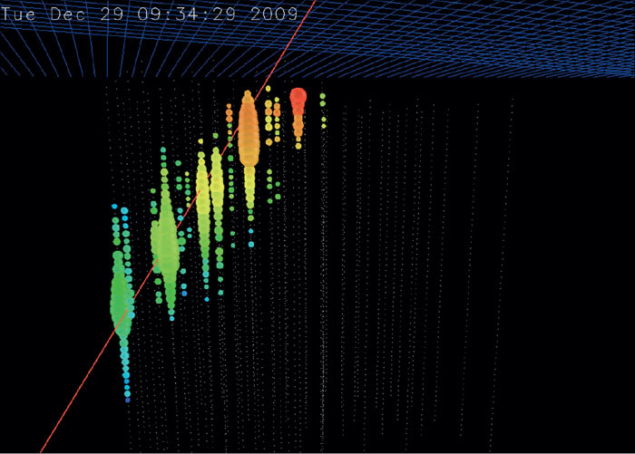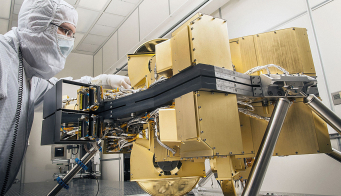
The IceCube collaboration, with a detector that looks at a cubic kilometre of ice at the South Pole, has searched for evidence of neutrinos associated with gamma-ray bursts (GRBs). They find none at a level 3.7 times lower than models predict, indicating that cosmic rays with energies above 108 TeV originate from some other source.
Where nature accelerates particles to 108 TeV has been one of the long-standing questions of extreme astrophysics. Although the flux of the highest-energy cosmic rays arriving at Earth is small, it pervades the universe and corresponds to a large amount of energy. Equally mysterious in origin, gamma-ray bursts (GRBs), some associated with the collapse of massive stars to black holes, have released a small fraction of a solar mass of radiation more than once a day since the Big Bang. The assumption is that they invest a similar amount of energy in the acceleration of protons, which explains the observed cosmic-ray flux. This leads to the 15-year-old prediction that when protons and gamma rays co-exist in the GRB fireball they photoproduce pions that decay into neutrinos. The prediction is quantitative (albeit with astrophysical ambiguities) because astronomers can calculate the number of photons in the fireball, and the observed cosmic-ray flux dictates the number of protons. Textbook particle physics then predicts the number of neutrinos.
With 5160 photomultiplier tubes, the IceCube experiment has transformed a cubic kilometre of Antarctic ice into a Cherenkov detector. Even while still incomplete, the instrument reached the sensitivity to observe GRBs, taking data with 40 and 59 of the final number of 86 photomultiplier strings. The measurement is relatively easy because it exploits alerts from the NASA’s Swift satellite and Fermi Gamma-Ray Space Telescope to look for neutrinos arriving from the right direction at the right time. The window is small enough to do a background-free measurement because accidental coincidence with a high-energy atmospheric neutrino is negligible.
During the periods of data-taking, some 307 GRBs had the potential to result in neutrinos that IceCube could detect. However, the experiment found no evidence for any neutrinos that could be associated with the GRBs. This implies either that GRBs are not the only sources of cosmic rays with energies exceeding 108 TeV or that the efficiency of neutrino production is much lower than has been predicted.
With GRBs on probation, the stock rises for the alternative speculation that associates supermassive black holes at the centres of galaxies with the enigmatic cosmic accelerators.
Further reading
IceCube collaboration 2012 Nature 484 351.








